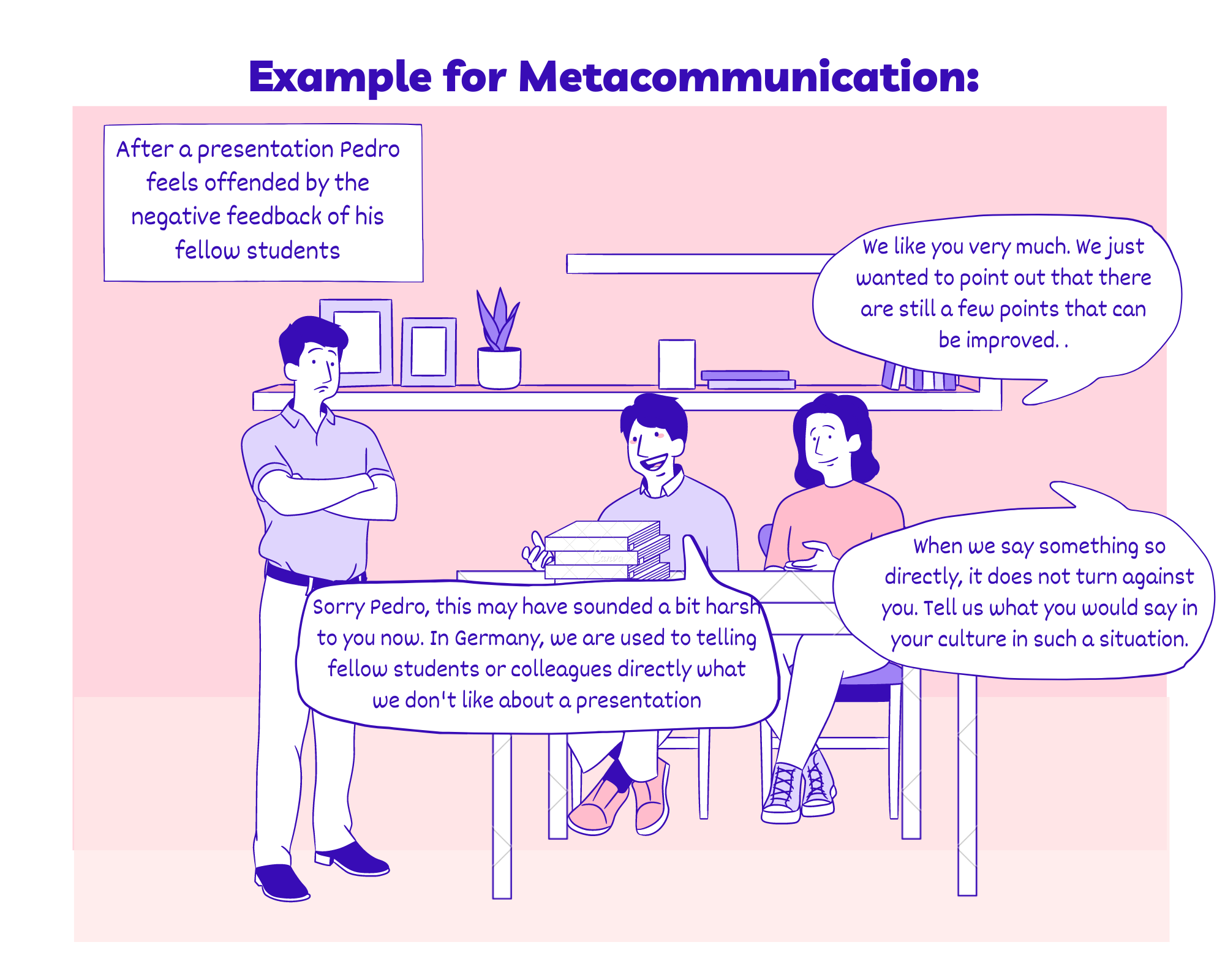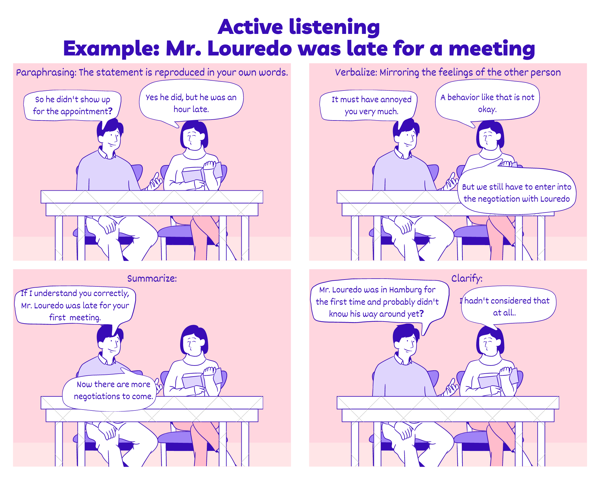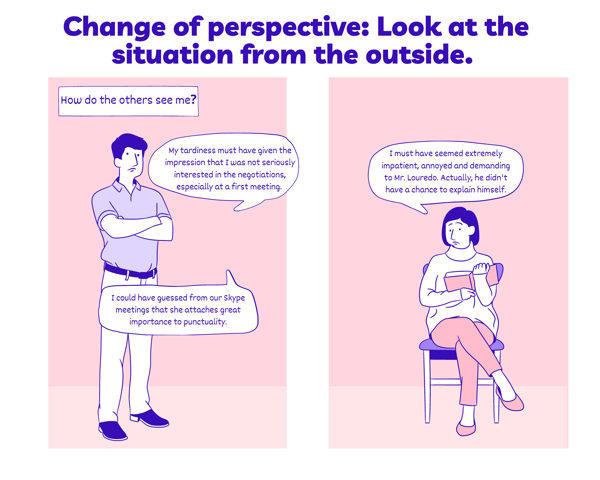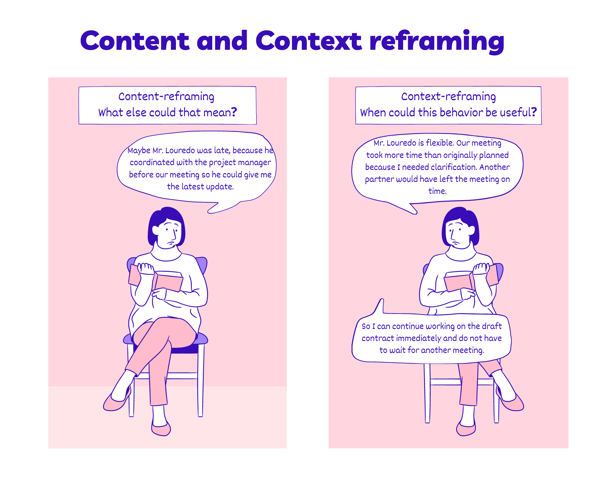Chapter 3: Intercultural Competences
4. Avoiding Misunderstandings
- How do we appreciatively interact? The most important techniques for an appreciative interaction are metacommunication
- active listening
- role distance and
- change of perspective
- reframing
Metacommunication: Talk about one's own irritation
The definition of metacommunication according to Watzlawick is "communication about communication". Comments or reactions of the communication partner are commented on, corrected, modified, specified and evaluated. The communication partners can either react by agreeing or rejecting. The method and conditions of communication become subject of communication. Thus, metacommunication turns into an important instrument in understanding social interaction between the communication partners. Metacommunication is especially helpful when it comes to communicative misunderstandings and confusion; it improves our communication capability because of its analytical and reflective nature.

Active listening: Give feedback with I-messages; reflect back questions of understanding and feelings
In active listening the conversation partner is shown the readiness to listen. Receptive attention is primarily possible when outstanding interest in a conversation is expressed. A prerequisite for this purpose is that receptiveness is not disturbed by a secondary objective or distraction from the outside. Therefore, active listening means to try and empathize with the conversation partner, to think along during the conversation and to show attention and interest to the conversation partner.

Change of perspective: Look at the situation from the outside. Question: How do the others see me? Why am I acting like this?
Looking at the situation objectively and asking yourself: How do others see me? Why am I acting this way? A change of perspective is a key to self-confidence and reflective perception. In the debate between the strange and the familiar, the change of perspective enhances one's own perception by trying to take on the point of view of the others.

Content- and Context-reframing: Content-reframing: What else could this mean? What are the positive signals of this behavior? Context-reframing: When could this behavior be useful? Where could it be a resource?
The positive intention of the negotiating person to recognize: What could this behavior mean? What are the positive signals sent by this behavior? In content-reframing possible explanation should be found for the strange behavior of the other, without imputing an evil intention. For this purpose, it is useful to consciously distance oneself from the situation and to look at the facts from a third perspective. It is followed by context-reframing which means to recognize alternative interpretations: When could this behavior be useful? Where could it be used as a resource?

Major source of information for these entries: O'Connor and Symor, 1997